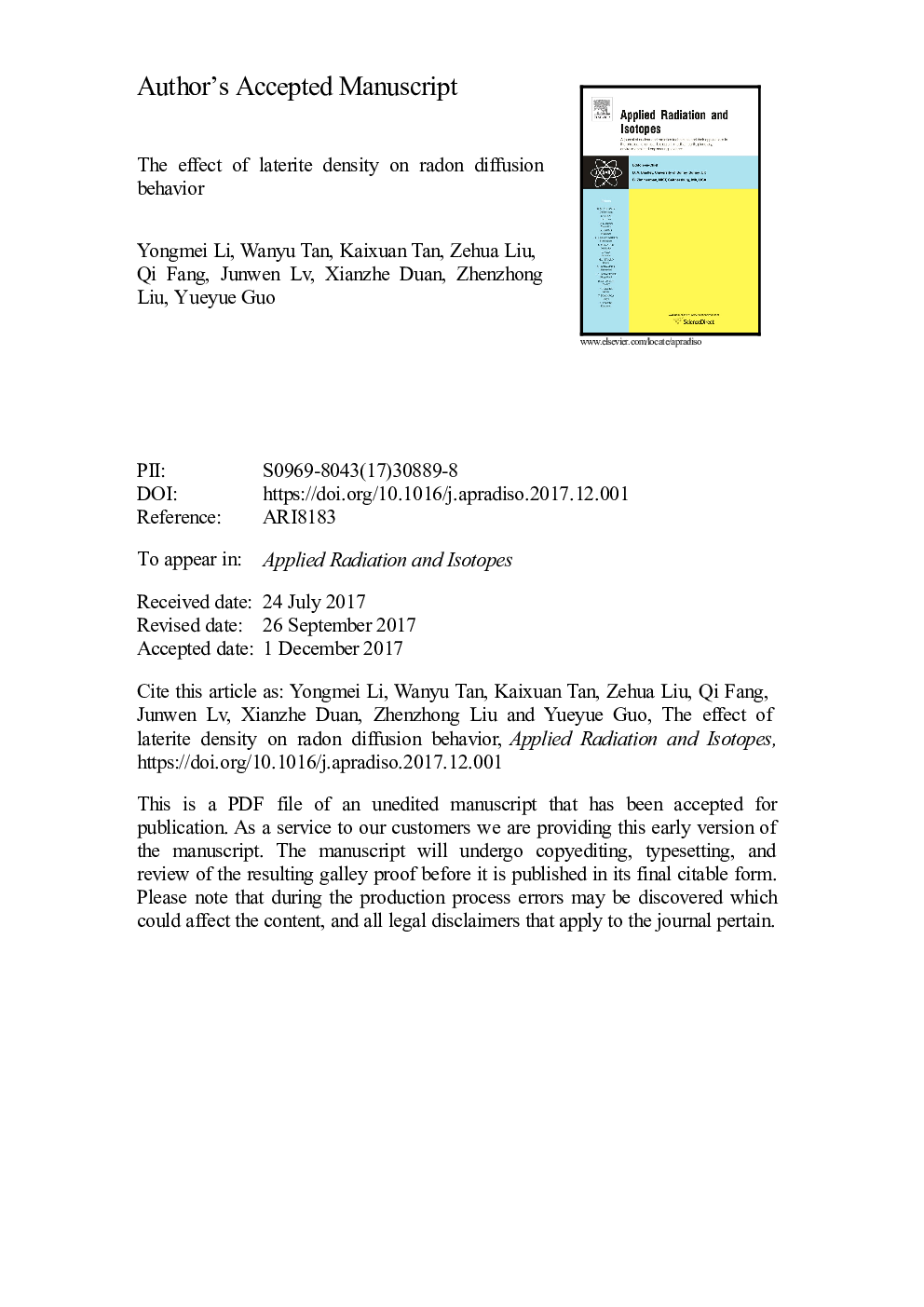| Article ID | Journal | Published Year | Pages | File Type |
|---|---|---|---|---|
| 8208842 | Applied Radiation and Isotopes | 2018 | 19 Pages |
Abstract
Radon generated in porous media such as soils and rocks migrates into indoor and outdoor air mainly by diffusion, possessing significant hazards to human health. In order to reduce these hazards of radon, it is of great importance to study the diffusion behavior of radon. In this study, we systematically measured the radon diffusion coefficient of laterite with the density ranging from 0.917 g cmâ3 to 2.238 g cmâ3, and studied the effect of laterite density on the radon diffusion. The results show that the radon diffusion coefficient of the laterite generally decreases with the increasing laterite density. In addition, three possible relationships between the radon diffusion coefficient and the laterite density are found out as follows: (1) the linear correlation with a slope of â4.48 à 10â6 for laterite with density ranging from 0.917 to 1.095 g cmâ3, (2) the exponential correlation for laterite with density from 1.095 to 1.63 g cmâ3, (3) linear correlation with a slope of â3.1 à 10â7 for laterite with density from 1.63 to 2.238 g cmâ3. The complex relationship between the radon diffusion coefficient and density is caused by the change of porosity and tortuosity of the laterite. Therefore, we suggest that a suitable density should be adopted while using the laterite to effectively cover uranium tailings or economically produce building materials that can curb the radon exhalation.
Related Topics
Physical Sciences and Engineering
Physics and Astronomy
Radiation
Authors
Yongmei Li, Wanyu Tan, Kaixuan Tan, Zehua Liu, Qi Fang, Junwen Lv, Xianzhe Duan, Zhenzhong Liu, Yueyue Guo,
